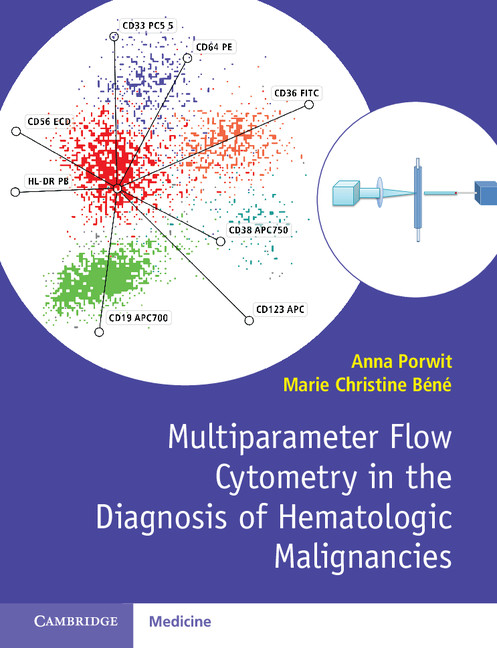Diagnostic Techniques In Hematological Malignancies
Dec 13 2010 Diagnostic Techniques in Hematological Malignancies details the principles and applications of each of these test types in the diagnosis of hematological malignancies in blood and bone marrow. With the backdrop of three unique real-life case studies learn how to interpret advancements in diagnostic tests used in risk stratification for hematologic malignancies including next-generation sequencing for the discovery of novel molecular abnormalities as defined by the World Health Organization and European Leukemia Network.
 Molecular Diagnosis Of The Hematologic Cancers Nejm
Molecular Diagnosis Of The Hematologic Cancers Nejm
A total of 1054 samples from 219 patients were available for analysis.

Diagnostic techniques in hematological malignancies. These slices are used to. Diagnostic Techniques in Hematological Malignancies - November 2010. The first five chapters provide a succinct review of the diagnostic techniques covering morphology immunocytochemistry flow cytometry cytogenetics and molecular genetics.
A nuclear scan uses. Multiple methods can be used for the detection of specific chromosomal abnormalities including various permutations of the polymerase chain reaction PCR Southern blotting and fluorescence in situ hybridization FISH with molecular probes. Tests Targeting Specific Chromosomal Abnormalities.
The cancer groups are highly heterogeneous in that some. Diagnostic Techniques in Hematological Malignancies details the principles and applications of each of these test types in the diagnosis of hematological malignancies. Yamamoto Y Kiyoi H Nakano Y et al.
Diagnostic Techniques in Hematological Malignancies. Morphology cell phenotyping cytogenetics and molecular genetics are essential and the results must be. The diagnosis and monitoring of hematological malignancies is complex and requires a systematic approach.
Phenotyping of hematological malignancies using multiparameter flow cytometry proved to be a high-ly sensitive and specific method for the discrimina-tion between normal and leukemic cells even when leukaemic cells were present at very low frequencies among a major population of normal haematopoietic. Sixty patients had a CSF localization diagnosed by positive flow cytometry cytomorphology or both. 2434 - 2439 Crossref.
Accurate diagnosis of haematological malignancies depends on the knowledge and expertise of the pathologist as well as availability of modern diagnostic techniques. Well-designed prospective studies are needed to better clarify the spectrum of viral infection risk factors for disease and define effective prevention and treatment strategies. We use cookies to distinguish you from other users and to provide you with a better experience on our websites.
Activating mutation of D835 within the activation loop of FLT3 in human hematologic malignancies. Cytogenetic abnormalities are considered common events in this regard. Morphology cell phenotyping cytogenetics and molecular genetics are essential and the results must be integrated.
Jan 01 2006 The spectrum of viral infections for patients with hematological malignancy is expanding and diagnosis has increased because of new molecular diagnostic techniques. The first section describes the test modalities - including methodological principles data interpretation and limitations - and is illustrated by clinical examples. For each the methodological principles data interpretation and limitations are provided and the role of the techniques illustrated by clinical examples.
Jun 28 2020 Hematological malignancies are a group of diseases where several cancers are generated from blood-forming tissuescells of the body. It is very important to keep ourselves updated with the latest literature and diagnostic pitfalls. Nov 11 2010 The diagnosis and monitoring of hematological malignancies is complex and requires a systematic approach.
Simple yet comprehensive hematological malignancy sample profiling Whole-genome microarray with targeted NGS a powerful pairing for hematological cancer research Technique Application Importance Whole-genome microarray Identify whole-genome copy number changes Increases the detection of abnormalities as compared to karyotyping FISH SNP. Use of ancillary techniques is advisable for definitive diagnosis. Morphology cell phenotyping cytogenetics and molecular genetics are essential and the results must be integrated.
These abnormalities generally consist of structural chromosomal abnormalities or gene mutations which often are integral to the pathogenesis and subsequent evolution of an individual malignancy. Diagnosis of hematologic malignancies have matured to encompass molecular as well as phenotypic characteristics. However current diagnostic approaches for this disease group are equally complex and heterogeneous therefore this comprehensive review aimed to catalog and appraise hematological characterization techniques to facilitate a greater understanding of disease classification diagnosis monitoring and importantly selection of appropriate.
An MRI uses a powerful magnet and radio waves to take pictures of your body in slices. A CT scan uses an x-ray machine linked to a computer to take a series of pictures of your organs from different. The diagnosis and monitoring of hematological malignancies is complex and requires a systematic approach.
Jul 17 2019 Imaging Tests CT Scan. Diagnostic Techniques in Hematological Malignancies details the principles and applications of each of these test types in the diagnosis of hematological. We reviewed the results of diagnostic evaluations of all CSF samples analyzed for localization of a hematologic malignancy between 2001 and 2004 at our center.
 Pdf Current Diagnostic Methods For Hematological Malignancies A Mini Review
Pdf Current Diagnostic Methods For Hematological Malignancies A Mini Review
 Multiparameter Flow Cytometry In The Diagnosis Of Hematologic Malignancies
Multiparameter Flow Cytometry In The Diagnosis Of Hematologic Malignancies